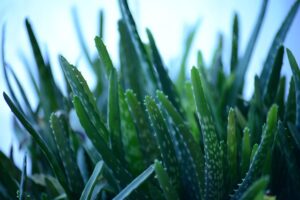Aloe vera cultivation in India is becoming one of the most popular choices among gardeners and farmers who love hardy, rewarding plants. Have you ever brushed your hand against a spiky green aloe leaf and felt the cool gel inside soothe your skin instantly?
That simple moment captures why this humble plant deserves a space in every Indian home and garden. Aloe vera cultivation in India has grown from being a household tradition to a full-fledged agricultural opportunity.
“The beauty of aloe lies in its simplicity – it thrives on neglect yet gives back endlessly.”
Introduction
In India, where traditional remedies still thrive alongside modern lifestyles, aloe vera has become one of the most sought-after plants.
Known for its thick, fleshy leaves filled with clear, soothing gel, this succulent is both easy to grow and highly valuable. Its demand in herbal, cosmetic and pharmaceutical industries continues to rise every year.
Here’s a quick overview of aloe vera cultivation in India:
| Parameter | Details |
|---|---|
| Scientific Name | Aloe barbadensis miller |
| Family | Asphodelaceae |
| Common Names | Ghritkumari, Ghee Kunwar, Aloe |
| Type | Perennial succulent |
| Ideal Temperature | 20°C to 35°C |
| Soil Type | Sandy loam with good drainage |
| Watering | Once in 2–3 weeks |
| Sunlight | Full to partial sunlight |
| Propagation | By suckers or offsets |
| Harvest Time | 8–10 months after planting |
History and Origin
The plant is believed to have originated in the Arabian Peninsula and later spread to Africa, India and the Mediterranean.
Ancient Egyptians called it the “plant of immortality” and used it for skincare and healing wounds. In India, aloe vera found its place in Ayurvedic medicine under the name Ghritkumari, meaning “youthful energy.”
The word “Aloe” comes from the Arabic word Alloeh meaning “bitter substance,” while “Vera” is Latin for “true.” Together they form “True Aloe,” a fitting name for a plant known for its purity and authenticity.
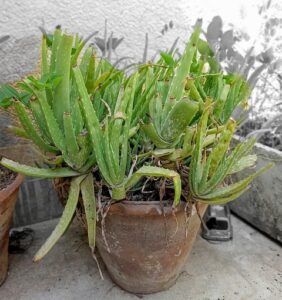
Growing Conditions
Aloe vera is among the easiest crops to cultivate in India, especially in regions with warm and dry climates. It doesn’t need much pampering, but the right growing conditions make a huge difference in yield and quality.
Soil
Aloe thrives in sandy loam soil with good drainage. Avoid heavy clay soil since it retains water and causes root rot. Slightly alkaline to neutral pH (7–8) works best. You can mix sand and compost in equal parts for home planting.
Water
Watering aloe vera requires care. The plant stores water in its leaves, so overwatering can be fatal. Water only when the soil is completely dry. During summer, watering once every two weeks is usually enough.
Sunlight
Full sunlight encourages faster growth, though aloe also tolerates partial shade. If you’re growing it indoors, place the pot near a bright window.
Temperature
Ideal growing temperature ranges between 20°C and 35°C. In cooler regions, it’s better to keep aloe indoors during winter to prevent frost damage.
Aloe vera cultivation in India: Scope, Practices and Market
India’s climate is perfect for aloe vera cultivation. The plant’s ability to survive with minimal water makes it ideal for semi-arid and arid regions, especially in states like Rajasthan, Gujarat, Maharashtra, Tamil Nadu, Andhra Pradesh and Madhya Pradesh.
Farming Practices
Aloe farming usually begins with the selection of suckers or offshoots from healthy plants. Around 10,000 to 12,000 plants can be grown per acre, depending on spacing. The best planting season is from February to July.
Land should be ploughed twice to ensure fine tilth. Raised beds are preferred to prevent water stagnation. Farmers generally apply 10–12 tonnes of organic manure per hectare during land preparation. Chemical fertilizers are rarely used since aloe grows best organically.
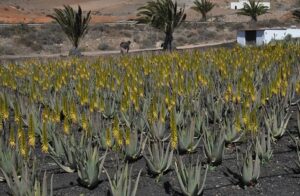
Minimal irrigation is required. Water the field once every 2–3 weeks depending on rainfall and temperature. Intercropping with crops like amla or drumstick is also common in large farms.
Harvesting begins 8–10 months after planting. Mature leaves are cut from the base, usually 3–4 leaves per plant in one harvest. Each plant can yield for 3–4 years before replanting is required.
Yield and Profitability
On average, an acre of aloe vera produces about 12–15 tonnes of leaves per year. Farmers can earn ₹2–3 lakh per acre annually, depending on the quality and market rate.
Value addition through gel extraction or juice processing increases profit margins significantly.
Processing and Products
Aloe leaves are processed for gel, juice, powder and cosmetics. The gel is extracted mechanically and then purified for use in herbal and cosmetic formulations.
Many small-scale processing units in India buy aloe leaves directly from farmers.
Scope and Market Demand
The Indian aloe vera market has seen steady growth over the last decade, driven by the natural wellness and cosmetic industries. Companies like Patanjali, Dabur, Himalaya, and Baidyanath use aloe in skincare, haircare and health products.
Globally, the aloe vera market is valued at over USD 1.5 billion, and India contributes significantly both as a grower and exporter. Demand for organic aloe is especially rising in European and Asian markets.
For rural entrepreneurs, aloe offers a sustainable business model. It requires less input, gives multiple years of yield, and aligns with the growing demand for herbal products.
In short, aloe vera farming in India combines sustainability with profitability — it’s low on risk but high on return.
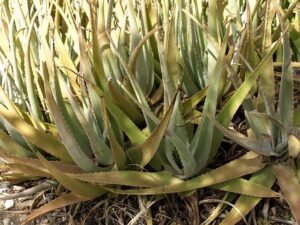
Varieties of Aloe Vera
India grows several varieties of aloe, each differing in gel quality and climate tolerance. Here are some common ones:
- Aloe barbadensis miller
- Native Place: Arabian Peninsula
- Fruit Name: Not fruit-bearing
- Climate Type: Hot and dry
This is the most popular and commercially grown variety, known for its thick leaves and high gel content.
- Aloe indica
- Native Place: India
- Fruit Name: Non-edible capsule
- Climate Type: Tropical and subtropical
It’s commonly seen in Indian home gardens and used in Ayurvedic medicine.
- Aloe perryi
- Native Place: Yemen
- Fruit Name: Small capsule
- Climate Type: Arid regions
Known for its medicinal properties, it’s cultivated for essential oil extraction.
- Aloe ferox
- Native Place: South Africa
- Fruit Name: Dry capsule
- Climate Type: Semi-arid
Its bitter sap is used in pharmaceutical products, especially laxatives.

Care Tips
Caring for aloe vera is all about balance. Too much attention can harm it, while too little might slow its growth.
1. Pruning
Remove dry or damaged leaves from the base using a clean knife. This helps new shoots grow faster and keeps the plant healthy.
2. Repotting
Aloe vera grows offsets (baby plants) around its base. When the pot becomes crowded, gently remove the offsets and replant them separately. Repot every 2–3 years in fresh soil.
3. Fertilizing
Feed aloe with a diluted organic fertilizer once during the growing season (spring or summer). Avoid chemical fertilizers as they can burn roots.
4. Propagation
Propagation is easiest through offsets or suckers. Separate them when they’re at least 5–6 cm tall, let them dry for a day and plant in sandy soil.
5. Protection
Keep your aloe out of heavy rains or frost. If outdoors, shift it to a sheltered area during monsoon.
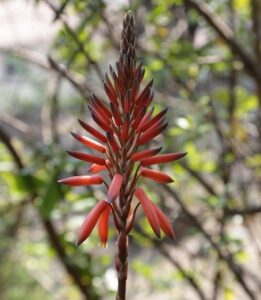
Problems and Solutions
Like all plants, aloe can face a few issues, especially when growing conditions aren’t ideal.
Problem 1: Yellowing leaves
Cause: Overwatering or poor drainage.
Solution: Let the soil dry completely between watering and ensure the pot has holes for drainage.
Problem 2: Soft or mushy leaves
Cause: Fungal infection due to excess moisture.
Solution: Remove affected leaves, use a fungicide if needed and reduce watering.
Problem 3: Brown tips
Cause: Sunburn or low humidity.
Solution: Move the plant to partial shade and mist occasionally.
Problem 4: Pests like mealybugs or aphids
Cause: Damp environment.
Solution: Wipe leaves with neem oil or a mild soap-water solution.
Problem 5: No new growth
Cause: Nutrient-poor soil or root-bound condition.
Solution: Repot the plant in fresh soil and add compost.
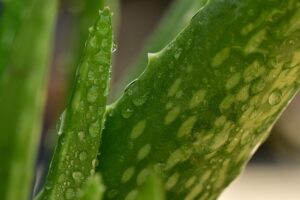
Uses and Benefits
Aloe vera isn’t just a plant—it’s a natural pharmacy.
Medicinal Uses
Its gel is known for healing burns, cuts and skin irritations. Many Ayurvedic preparations use aloe for digestion and immunity.
Cosmetic Uses
Aloe vera gel is used in creams, shampoos and face masks. It moisturizes the skin, reduces acne and promotes hair growth.
Environmental Benefits
It purifies indoor air and can grow even in low-water conditions, making it ideal for sustainable gardening.
Cultural Significance
In Indian households, aloe vera symbolizes healing and endurance. It’s often gifted during housewarmings for good health and luck.
Economic Importance
With rising demand from the herbal and cosmetic industry, aloe farming has become a profitable venture for Indian farmers, especially in Rajasthan, Gujarat, Tamil Nadu and Maharashtra.
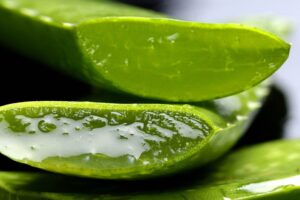
Interesting Facts about Aloe Vera
- Aloe vera contains over 75 active compounds including vitamins, minerals and enzymes.
- It can survive for months without water due to its ability to store moisture.
- Cleopatra was said to use aloe gel as part of her beauty routine.
- It belongs to the same family as onions and garlic.
- Aloe gel has natural anti-inflammatory properties that help relieve joint pain.
FAQs1. Is aloe vera cultivation profitable in India? 2. How long does it take for aloe vera to mature? 3. Can aloe vera be grown indoors? 4. How do farmers harvest aloe vera? 5. What are the major aloe-growing states in India? |
Conclusion
Aloe vera cultivation in India beautifully bridges tradition and modern opportunity. From being an ancient healing plant to a commercial crop, it continues to thrive because of its versatility and resilience. Whether you grow it in a pot on your balcony or on acres of farmland, aloe vera rewards you with beauty, health and income.
Thanks for reading. Keep growing, keep exploring, and don’t forget to return here at gardeningbud.com for more plants, tips and gardening wisdom.

